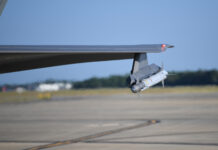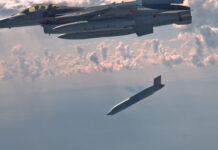The US State Department has approved a potential Foreign Military Sale (FMS) to Poland of aerostat-based early warning radar systems, the US Defense Security Cooperation Agency (DSCA) announced on 7 February 2024.
The proposed FMS package, which is worth USD 1.2 billion (EUR 1.1 billion), has been passed to the US Congress for final approval.
According to Polish sources the FMS request covers four such systems, which comprise Airspace and Surface Radar Reconnaissance (ASRR) aerostat systems, airborne early warning radars with identification of friend or foe (IFF) capabilities, electronic sensor systems, mooring systems with powered tethers featuring embedded fibre optics, ground control stations and associated installation hardware. The package also includes various aspects of technical, engineering, programme, logistics and training support.
According to the DSCA, the proposed sale “will improve Poland’s capability to meet current and future threats of enemy air and ground weapons systems”. The agency added that Poland will use the capability “as an airborne early warning system to defend against incoming regional threats. This will also enable Poland to increase its contribution to future NATO operations.”
The acquisition of aerostat-based warning systems is one of many areas where Poland has bolstered its defence capabilities following Russia’s all-out invasion in February 2022 of Polish neighbour Ukraine.
The Polish government plans to spend 4% of GDP on defence in 2024: double the target NATO defence spending goal.
The principal contractors for the Polish FMS package will be Raytheon Intelligence and Space of El Segundo, California; TCOM of Columbia, Maryland, which provides the aerostats; ELTA North America of Annapolis Junction, Maryland, which provides the radars; and Avantus Federal (a wholly owned subsidiary of QinetiQ Inc), of McLean, Virginia.













